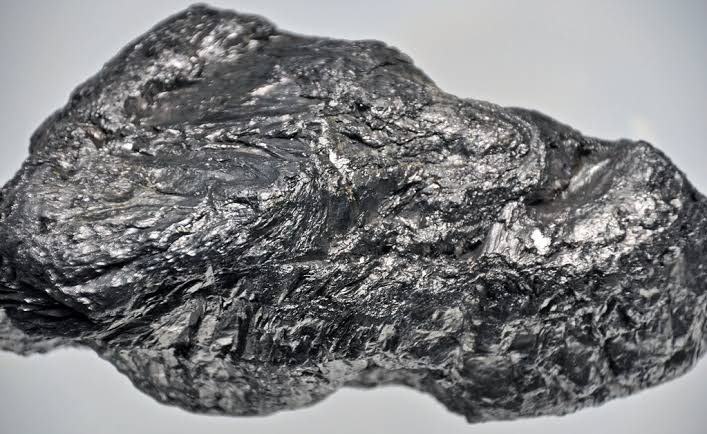Graphite is widely used as a lubricant due to its unique properties that make it highly effective in reducing friction and wear between moving surfaces. Unlike traditional lubricants such as oils and greases, graphite operates under extreme conditions where conventional lubricants may fail. It has a layered structure with weak Van der Waals forces between the layers, allowing it to easily slide over surfaces. Graphite’s ability to withstand high temperatures and chemically harsh environments, coupled with its low coefficient of friction, makes it an ideal choice for various industrial applications where lubrication is critical.
Low Friction Coefficient
One of the primary reasons graphite is used as a lubricant is its exceptionally low coefficient of friction. The weak interlayer bonds in its crystal structure allow graphite flakes to slide past each other smoothly when applied between moving parts. This property significantly reduces frictional forces and minimizes wear on machinery and components, leading to extended service life and improved operational efficiency. In applications where friction must be kept to a minimum, such as in high-speed machinery or automotive components, graphite-based lubricants provide superior performance compared to conventional lubricants.
High Temperature Stability
Graphite exhibits remarkable stability at high temperatures, making it suitable for lubricating components operating in extreme heat conditions. Unlike organic lubricants that may degrade or evaporate at elevated temperatures, graphite remains stable and maintains its lubricating properties. This thermal stability allows graphite to effectively lubricate bearings, seals, and other critical components in industrial furnaces, engines, and aerospace applications where temperatures can exceed the limits of conventional lubricants. Its ability to endure high thermal stress without compromising performance makes graphite a preferred choice for demanding environments.

Chemical Inertness
Another key advantage of graphite as a lubricant is its chemical inertness, which enables it to resist degradation and corrosion in aggressive chemical environments. Graphite does not react with most chemicals and solvents, making it suitable for use in applications where exposure to acids, bases, or corrosive gases is a concern. This property ensures reliable lubrication and prevents chemical reactions that could compromise the integrity of machinery or components. Industries such as chemical processing, petrochemicals, and pharmaceuticals benefit from graphite’s resistance to chemical attack, ensuring safe and efficient operation of equipment.
Self-Lubricating Properties
Graphite possesses self-lubricating properties due to its layered atomic structure and Van der Waals forces between the layers. When applied as a lubricant, graphite flakes shear off and form a thin film between moving surfaces, reducing friction and preventing metal-to-metal contact. This self-lubricating mechanism enhances efficiency and reliability in mechanical systems by maintaining smooth operation and preventing premature wear. In applications where continuous lubrication is challenging or inaccessible, such as in sealed bearings or high-temperature environments, graphite’s self-lubricating nature ensures consistent performance over extended periods.
Electrical Conductivity
In certain applications, graphite’s electrical conductivity is an advantageous property that enhances its effectiveness as a lubricant. Conductive lubricants based on graphite can be used to reduce frictional static electricity buildup and prevent electrostatic discharge (ESD) in sensitive electronic components and manufacturing processes. This capability minimizes the risk of electrical damage and ensures reliable operation of equipment in electronics manufacturing, semiconductor fabrication, and aerospace industries where ESD protection is critical. Graphite’s conductivity also allows it to dissipate heat effectively, contributing to enhanced thermal management in lubricated systems.
Vote
Who is your all-time favorite president?
Compatibility with Different Materials
Graphite exhibits compatibility with a wide range of materials commonly used in engineering and manufacturing. Unlike some lubricants that may react adversely with certain metals or alloys, graphite is non-reactive and can be safely applied to various materials including steel, aluminum, copper, and alloys thereof. This compatibility extends the versatility of graphite-based lubricants across different industrial sectors and ensures compatibility with existing materials and equipment without compromising performance or integrity. It allows for widespread adoption in diverse applications where multiple materials are involved in mechanical assemblies or manufacturing processes.
Environmental Considerations
Graphite-based lubricants are favored for their environmental sustainability compared to petroleum-based lubricants. Graphite is a naturally occurring mineral with low toxicity and minimal environmental impact, making it a preferred choice in environmentally sensitive applications and industries. Its biodegradability and non-toxic nature reduce environmental footprint and comply with stringent regulatory standards for workplace safety and environmental protection. By choosing graphite-based lubricants, industries can minimize emissions, reduce waste disposal costs, and contribute to sustainable practices without compromising operational efficiency or performance.
Summary
Graphite’s unique combination of low friction coefficient, high temperature stability, chemical inertness, self-lubricating properties, electrical conductivity, compatibility with different materials, and environmental sustainability make it an ideal choice for lubricating various industrial applications. Whether in extreme heat environments, chemically harsh conditions, or applications requiring electrical conductivity, graphite-based lubricants offer superior performance and reliability. Understanding these inherent properties of graphite enables industries to optimize maintenance practices, extend equipment lifespan, and enhance operational efficiency while meeting stringent performance and environmental standards.